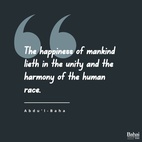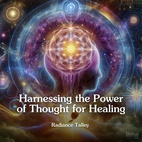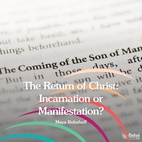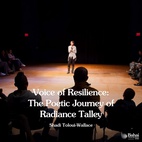The views expressed in our content reflect individual perspectives and do not represent the authoritative views of the Baha'i Faith.
Would you like to have a hopeful vision for the future? The Baha’i teachings offer humanity such a vision.
Even in the context of a critical analysis of the complex social, political, and economic challenges facing contemporary global society, two key clarifying concepts can provide us with a hopeful vision for the future of humanity:
- The recognition of a major shift in global consciousness, put into motion by the transformative scientific and spiritual discoveries that began in the mid-19th century.
- The onward march of two parallel historical processes; one of destruction, and the other of construction.
Most of us do not need an account of the evidences of the disintegrative process at work in the world today. We see it in the growing specter of terrorism, the ongoing regional wars, an unprecedented refugee crisis, the bloody clashes among people of various races, religions, and ideologies, and the persistence of poverty, racism, and sexism, just to name a few.
Rather than focusing on the destructive process, let us look at the constructive process, so that we can pursue our new approach to peace with a realistic expectation that the attainment of a lasting peace is not only possible, it is inevitable. The primary choice facing humanity today is whether peace is to be achieved through a constructive process of consultation and collaboration, or realized only after a violent destabilization of the planet by a harsh crash-landing of outworn mindsets and institutions.
The constructive process refers to the workings and effects of the positive energies that move the nations of the world toward collaborating with each other, based on the recognition of universal human rights and the dignity of all people. The ultimate destination of this constructive process is a world in which racial, religious, and national prejudices have been eliminated and a lasting peace has been realized. The Baha’i teachings refer to this future society as a “divine civilization:”
The heavenly Jerusalem is none other than divine civilization, and it is now ready. It is to be and shall be organized, and the oneness of humankind will be a visible fact. Humanity will then be brought together as one. The various religions will be united, and different races will be known as one kind. The Orient and Occident will be conjoined, and the banner of international peace will be unfurled. The world shall at last find peace, and the equalities and rights of men shall be established. The capacity of humankind will be tested, and a degree shall be attained where equality is a reality. – Abdu’l-Baha, The Promulgation of Universal Peace, p. 101.
Is this vision of a peaceful, equitable world merely a utopia and a result of pious hopes and dreams, or is it an achievable goal? If we are saying that it is, indeed, an achievable goal, what are the empirical and scientific evidences and logical arguments that can provide us with a foundation for hope?
A surprising fact of life in the 21st century is that empirical evidences of a positive and accelerating trend toward a better world abound in historical data. Large numbers of quantitative charts and graphs all depict the same positive historical trends. One of the richest sources of such data can be found in the work of Max Roser in www.ourworldindata.com.
At times, the turmoil on the destructive plane may lead us to believe that progress has been lost, or that conditions have worsened in one or more of these arenas. This tendency, which creates anger and hopelessness, makes it all the more important to understand the robustness of the constructive process and the fact that it is indeed moving forward, unhindered, on its own plane. In fact, the accelerated turmoil in our world today may, in large part, be considered to be the result of the threat posed by the constructive process to the destructive; not the other way around.
One of the things we notice immediately upon looking at historical trends during the last 200 years is that revolutionary movements began to take place in every aspect of human life in the early to mid-19th century—among them the obvious exponential rise in the number of scientific discoveries and technological innovations. But, more importantly, many other new and historically unprecedented civilizing trends also started during the same period.
Arguably the most important of these trends was the emerging awareness of equality of rights for all human beings. Visible movement in the area of recognition of human rights started in the 1800’s, with a sharp rise in the number of laws enacted against slavery, the abolition of which took great sacrifice on the part of many courageous human beings, including those who fought to eradicate the practice in the United States. This unmistakable trend in the rise of the legitimacy of enlightened humanitarian ideals, not only in the U.S. but also around the world, ultimately led to the adoption of the Declaration of Human Rights in 1948, which today constitutes a cornerstone of international law.
In addition to the increasing recognition of universal human rights, another example of the positive progress in the constructive plane is reflected in the Human Development Index—an index consisting of life expectancy, literacy and education, and GDP growth. Throughout the last century, there has been a steady upward trend toward literacy, health, life expectancy, and economic growth around the world.
Statistically, a vast databank of compelling evidence reveals the existence of a constructive and integrative pattern in contemporary human life. Understanding these empirical trends can give us hope.
This series of essays is adapted from Roya Akhavan’s new book, Peace for Our Planet: A New Approach, available here: http://smarturl.it/PFOPtg

















Comments
Sign in or create an account
Continue with Facebookor